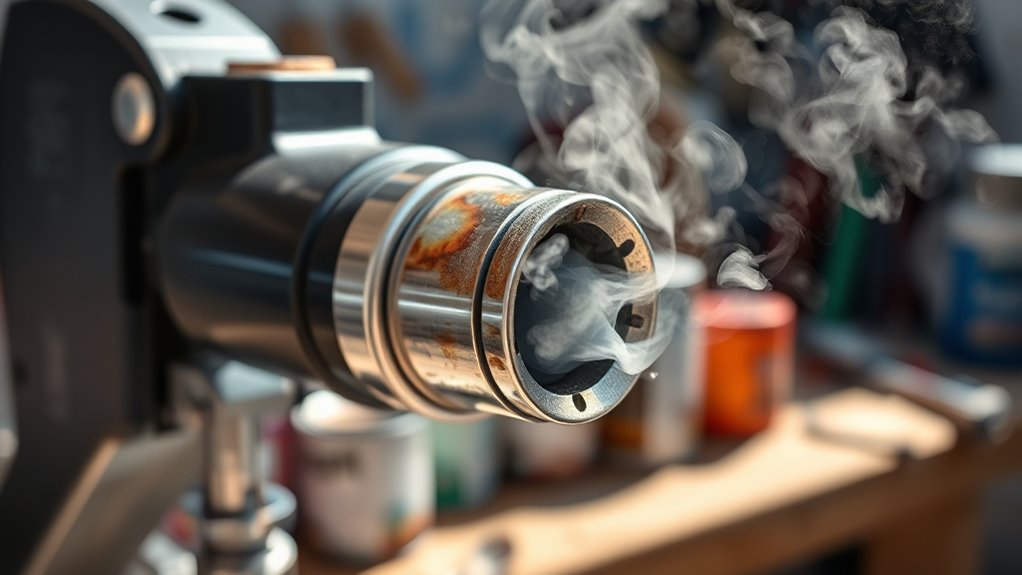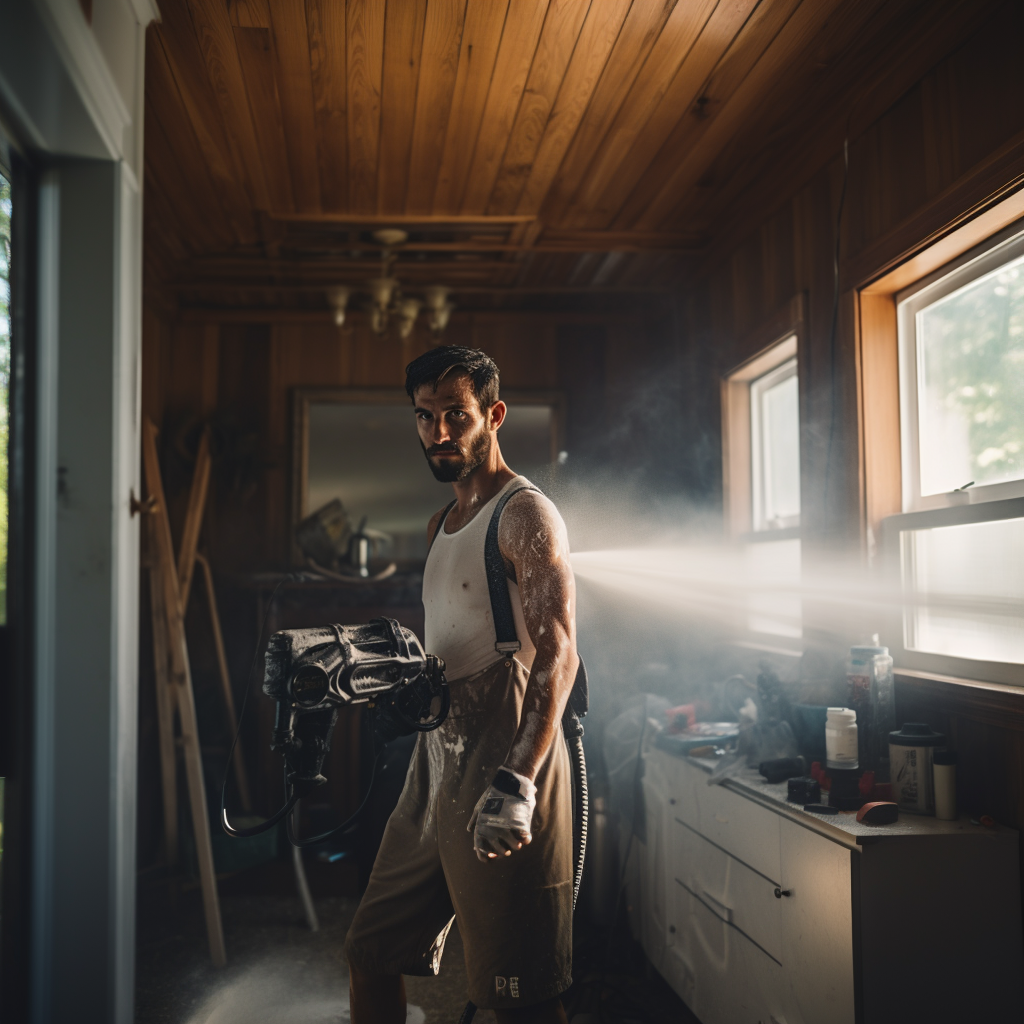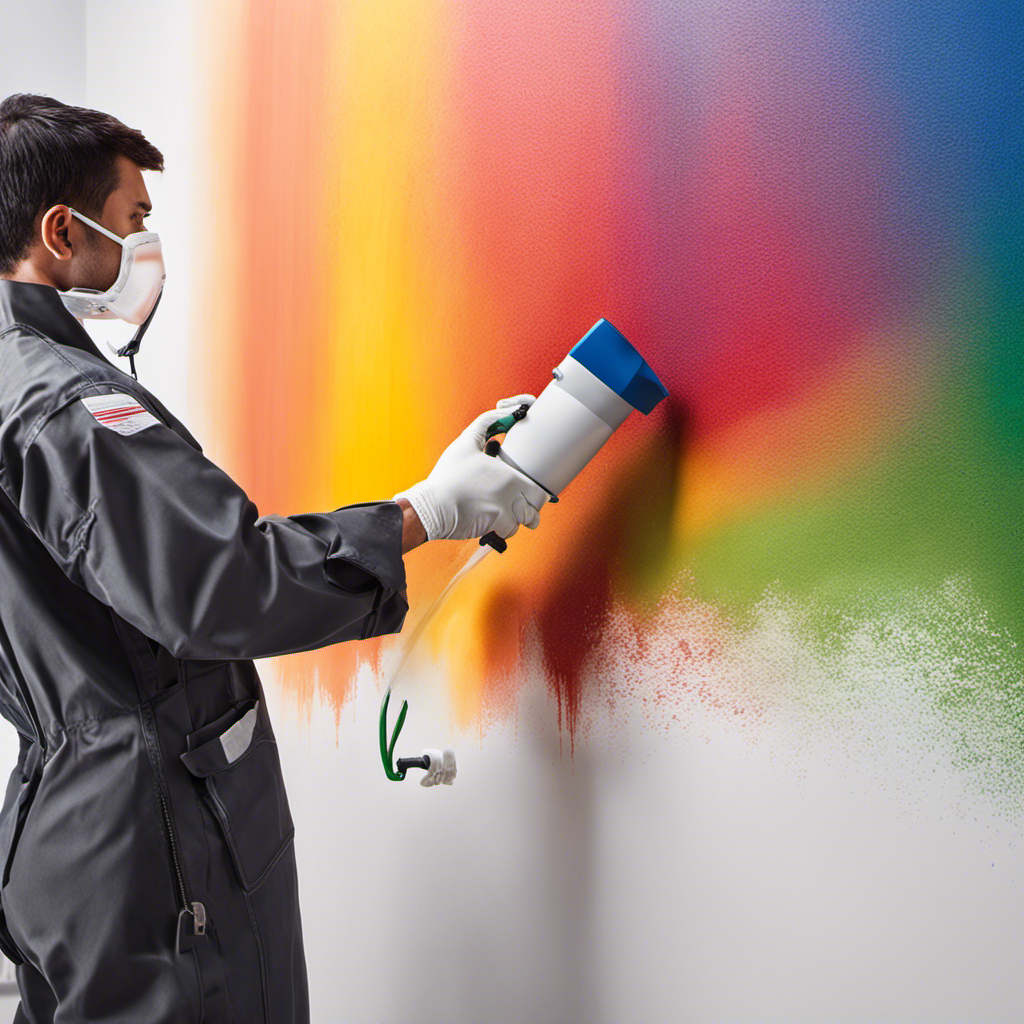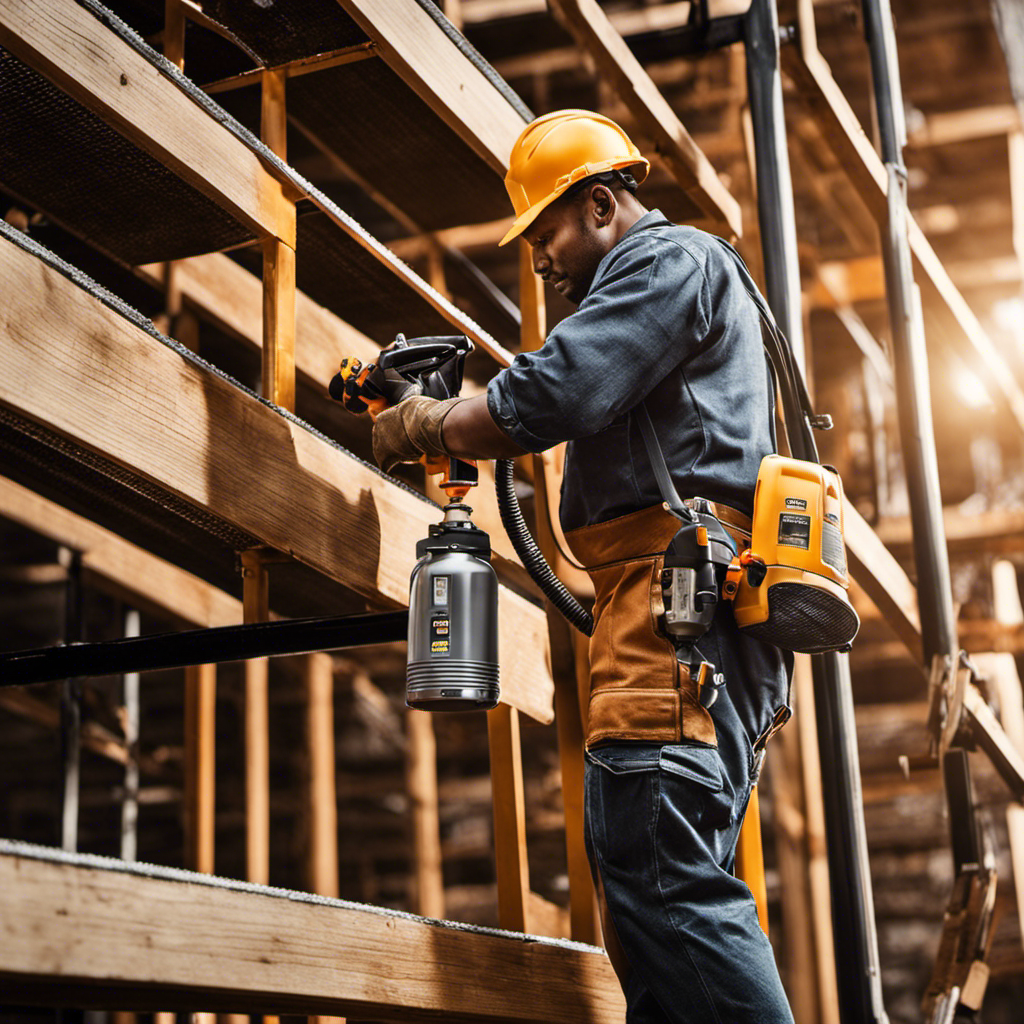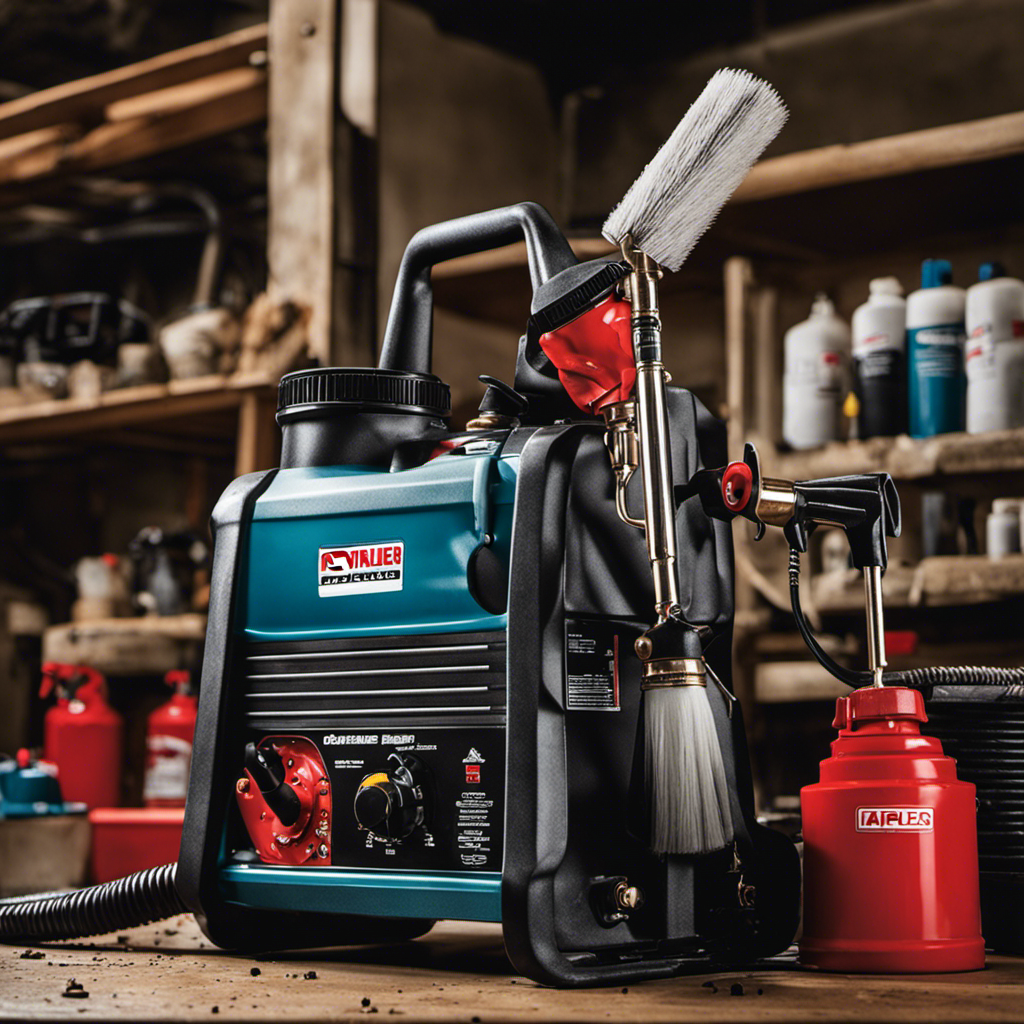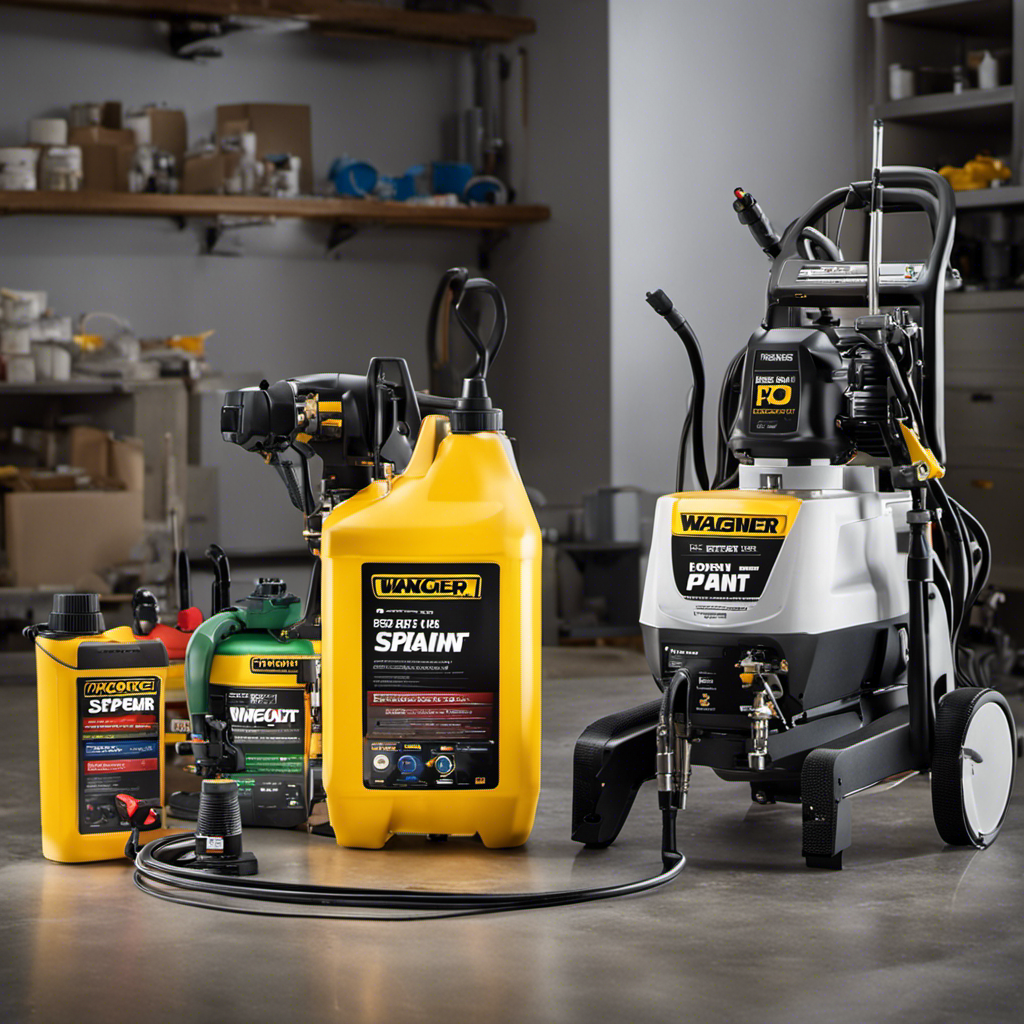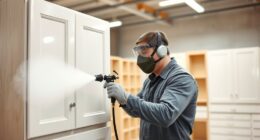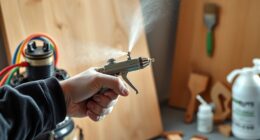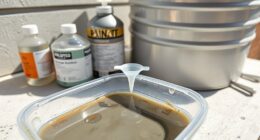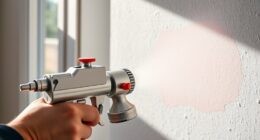If your paint sprayer gets too hot, stop spraying immediately and turn it off to prevent damage. Move it to a well-ventilated area away from direct sunlight and let it cool naturally. Avoid using water or refrigeration, as these can cause damage. Regularly check and clean vents, filters, and fans to prevent overheating during work. To learn more about keeping your sprayer cool and maintained, keep exploring these helpful tips.
Key Takeaways
- Immediately stop spraying and turn off the sprayer to prevent further damage.
- Move the equipment to a well-ventilated, shaded area to facilitate natural cooling.
- Allow the sprayer to cool down completely before attempting to use it again.
- Regularly inspect and clean vents, filters, and cooling components to prevent overheating.
- Follow manufacturer guidelines for cooling procedures and maintenance to ensure safe operation.
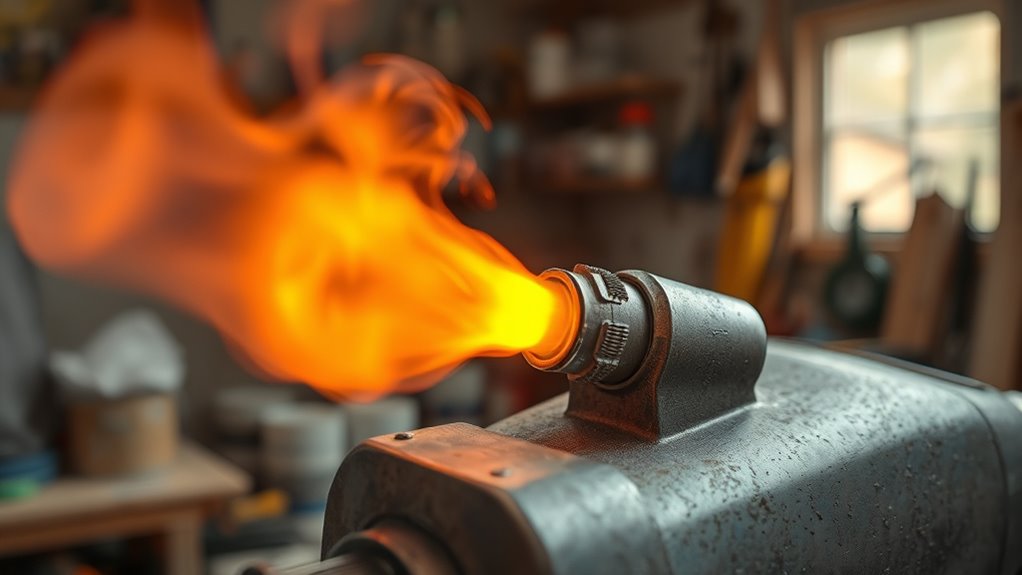
If your paint sprayer starts overheating, it can halt your project and potentially cause damage to the equipment. Recognizing the signs early and knowing what to do can save you time and money. Overheating often results from extended use without proper breaks or inadequate sprayer maintenance. When the machine gets too hot, its internal components can become stressed, leading to reduced performance or permanent damage. To prevent this, you need to understand effective cooling techniques and keep your sprayer well-maintained.
First, stop spraying immediately when the sprayer feels excessively hot. Continuing to run it under high temperatures can worsen the problem and cause parts to warp or fail. Once you’ve paused, allow the sprayer to cool down naturally. Place it in a well-ventilated area, away from direct sunlight or heat sources. This passive cooling method helps prevent additional heat buildup and gives the internal components a chance to return to a safe operating temperature. During this downtime, check your sprayer for signs of wear or buildup, which can hinder airflow and contribute to overheating.
Stop spraying immediately and let your sprayer cool in a well-ventilated area away from heat sources.
Sprayer maintenance plays a crucial role in preventing overheating issues. Regularly inspecting and cleaning your equipment ensures that vents, filters, and cooling fans are free from debris and blockages. Dirty filters restrict airflow, making it harder for the sprayer to dissipate heat. By keeping these parts clean and replacing worn-out components promptly, you help your sprayer operate more efficiently and stay cooler during use. Additionally, lubricating moving parts as recommended by the manufacturer reduces strain on the machine, decreasing the likelihood of overheating.
Using cooling techniques during operation can make a significant difference. For example, taking short breaks every 15-20 minutes allows the sprayer to cool down, especially during large projects. Some sprayers come equipped with built-in cooling systems, but if yours doesn’t, consider using external fans or even misting the equipment with water to help lower its temperature—just be sure not to introduce water into electrical parts. Always follow the manufacturer’s guidelines regarding cooling methods to avoid accidental damage. Implementing these practices aligns with the importance of proper maintenance in prolonging the lifespan and optimal performance of your equipment.
Frequently Asked Questions
Can I Continue Working if My Sprayer Overheats Briefly?
If your sprayer overheats briefly, you can usually continue working after a temporary cooling period. Turn off the sprayer and let it cool down for a few minutes to guarantee safe continuation. Check for any overheating signs before resuming. This approach prevents damage and keeps your project on track, but never force it to run again until it has fully cooled, ensuring safe operation and avoiding further issues.
What Safety Gear Should I Wear When Handling a Hot Sprayer?
When handling a hot sprayer, you should wear protective gloves to prevent burns and a respiratory mask to avoid inhaling fumes or particles. Make certain your gloves are heat-resistant, and the mask fits snugly for proper protection. Always prioritize safety by keeping a safe distance from heated components and working in a well-ventilated area. These precautions help you stay safe while managing a hot sprayer.
How Often Should I Check for Overheating During Prolonged Use?
You should keep a steady eye on your sprayer’s comfort level, taking cooling intervals every 15-20 minutes to prevent overheating indicators from showing. During prolonged use, check frequently—about every 10 minutes—to catch early signs of strain. This habit helps your equipment stay in prime condition, ensuring smooth operation and avoiding unnecessary downtime. Listening to your sprayer’s subtle signals keeps your project flowing seamlessly.
Are There Specific Brands Known for Overheating Issues?
Some brands have a reputation for overheating issues, often due to design flaws. You might notice that certain models from lesser-known brands tend to overheat more frequently, affecting your work. To avoid this, stick with reputable brands known for quality and good design. Check reviews and product feedback before purchasing. Being aware of these issues helps you select a reliable sprayer, ensuring smoother operation and fewer overheating problems.
Can I Modify My Sprayer to Prevent Overheating?
You can modify your sprayer to prevent overheating by adding sprayer insulation around the motor and components, which helps retain cool air. Consider implementing cooling modifications like installing small fans or heat sinks to improve airflow and dissipate heat more effectively. These adjustments can keep your sprayer cooler during extended use, reducing the risk of overheating and ensuring smoother operation without needing to replace your device.
Conclusion
When your paint sprayer overheats, think of it as a engine running hot—giving you a warning sign. Take action quickly to cool it down, just like letting a car engine rest. With a little patience and care, you’ll prevent damage and keep your project rolling smoothly. Don’t let the heat derail your work; instead, treat your sprayer like a friend needing a short break, so it can perform at its best again.
Franz came aboard the Paint Sprayer Zone team with a background in both journalism and home renovation. His articulate writing style, combined with a passion for DIY projects, makes him an invaluable asset. Franz has a knack for breaking down technical jargon into easy-to-understand content, ensuring that even the most novice of readers can grasp the complexities of paint sprayers.
